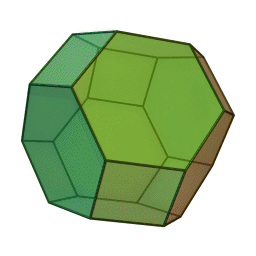Metal foam
Metal foam is a cellular structure made from solid metal featuring a large volume fraction of gas-filled pores. These pores can be either closed-cell or open-cell, with the cells defined by a thin solid metal layer. Metal foams combine the characteristic properties of metals with those of gas, resulting in a lightweight material with unique physical properties.
Properties and Characteristics[edit | edit source]
Metal foams possess a unique combination of properties not found in traditional dense metals or alloys. These include:
- Low Density: The presence of pores significantly reduces the material's density compared to solid metals.
- High Porosity: Metal foams typically have 75-95% porosity, contributing to their lightweight.
- High Surface Area: The structure of metal foams provides a high surface area to volume ratio.
- Energy Absorption: Metal foams can absorb and dissipate energy, making them useful in impact absorption and vibration damping applications.
- Thermal Conductivity: The thermal conductivity of metal foam can be adjusted based on the base metal used and the porosity level, making them suitable for heat exchangers and cooling devices.
Production Methods[edit | edit source]
Several methods exist for producing metal foams, including:
- Gas Injection: Metal is melted and a gas is injected into the melt, creating bubbles that solidify in the metal matrix.
- Powder Metallurgy: Metal powders are mixed with a foaming agent, compacted, and then heated to a temperature that decomposes the foaming agent, releasing gas that creates pores in the metal.
- Replication Process: A preform made of a removable material (e.g., salt beads) is infiltrated with molten metal; once solidified, the preform material is removed, leaving behind a metal foam.
Applications[edit | edit source]
Due to their unique properties, metal foams are used in a wide range of applications:
- Automotive Industry: For lightweight structures, energy absorption in crash protection, and as heat exchangers.
- Aerospace Industry: In components where weight reduction is critical, and for thermal management systems.
- Biomedical Applications: As bone scaffolds for bone ingrowth due to their porosity and mechanical properties.
- Architecture and Design: For aesthetic elements and structural components that benefit from the material's lightweight and distinctive appearance.
Challenges and Limitations[edit | edit source]
While metal foams offer many advantages, there are also challenges in their production and use:
- Cost: The production processes for metal foam can be expensive, limiting its use in cost-sensitive applications.
- Consistency and Control: Achieving consistent properties and controlling the size and distribution of pores can be difficult, affecting the material's performance.
Future Directions[edit | edit source]
Research in metal foam technology focuses on developing new production methods, improving material properties, and expanding applications. Innovations in additive manufacturing, for example, offer new possibilities for creating complex metal foam structures with precise control over their architecture.
| Metal foam Resources | ||
|---|---|---|
|
| |
Translate to: East Asian
中文,
日本,
한국어,
South Asian
हिन्दी,
Urdu,
বাংলা,
తెలుగు,
தமிழ்,
ಕನ್ನಡ,
Southeast Asian
Indonesian,
Vietnamese,
Thai,
မြန်မာဘာသာ,
European
español,
Deutsch,
français,
русский,
português do Brasil,
Italian,
polski
Navigation: Wellness - Encyclopedia - Health topics - Disease Index - Drugs - World Directory - Gray's Anatomy - Keto diet - Recipes
Search WikiMD
Ad.Tired of being Overweight? Try W8MD's physician weight loss program.
Semaglutide (Ozempic / Wegovy and Tirzepatide (Mounjaro / Zepbound) available.
Advertise on WikiMD
WikiMD is not a substitute for professional medical advice. See full disclaimer.
Credits:Most images are courtesy of Wikimedia commons, and templates Wikipedia, licensed under CC BY SA or similar.Contributors: Prab R. Tumpati, MD






